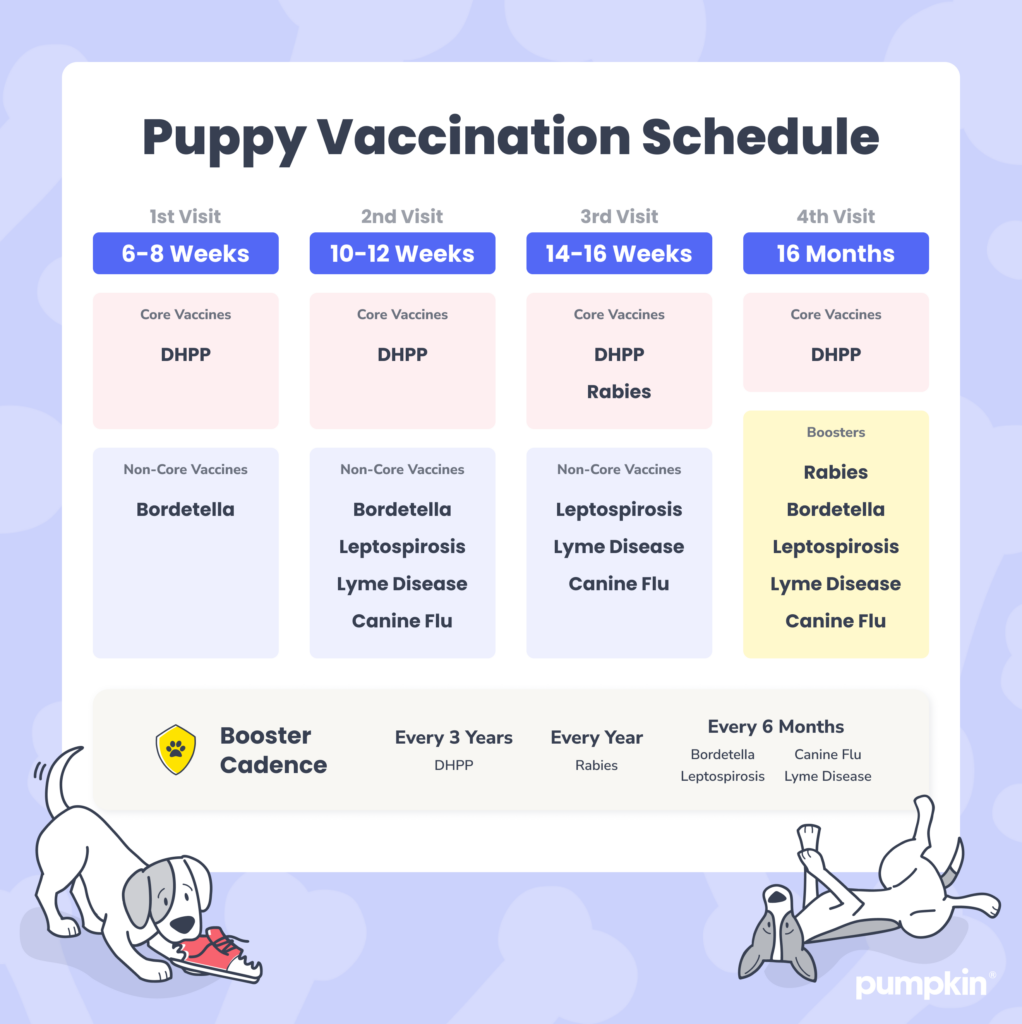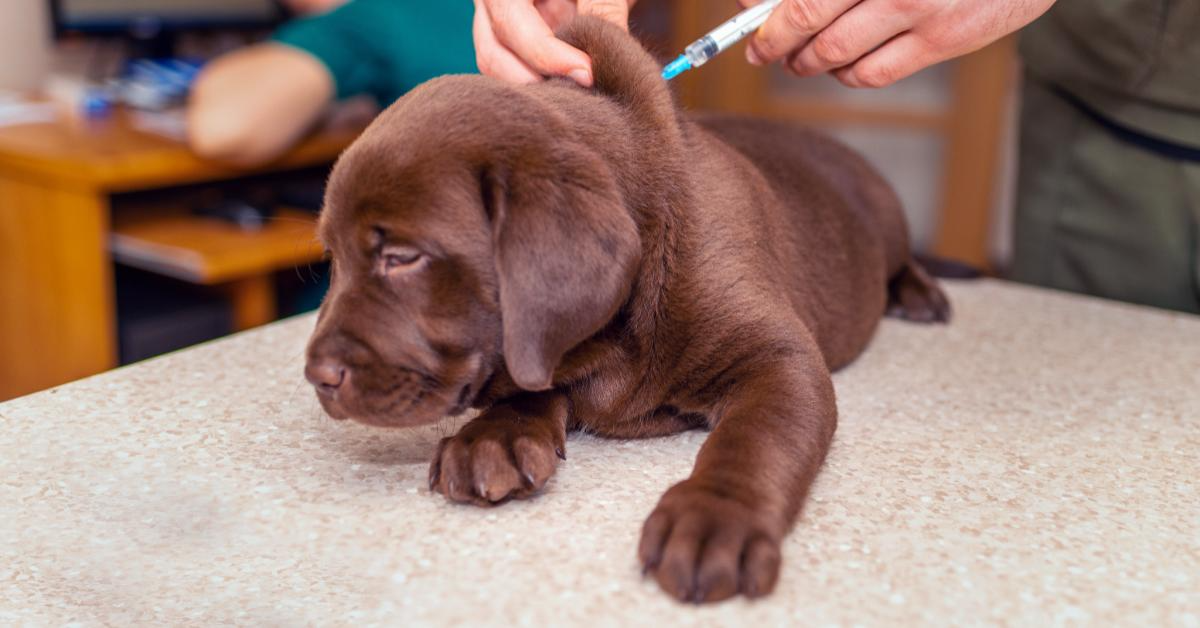Vaccinations are an essential part of keeping your dog healthy and protected from preventable diseases. The rabies vaccine holds particular importance, as rabies is a deadly viral disease that can be transmitted to humans and other mammals. By vaccinating our dogs against rabies, we not only protect them but also our communities.
In this article, we’ll explore the importance of the rabies vaccine for dogs, its recommended timing, and how it’s administered. It’s important to note that while this information provides a comprehensive overview, consulting a veterinarian is crucial for personalized advice and guidance.
Rabies 101
Rabies is a dangerous disease that affects the central nervous system of mammals, including humans and dogs.
Rabies is caused by the rabies virus, a member of the Lyssavirus genus, and is primarily transmitted through the saliva of an infected mammal, typically through bites. The virus targets the central nervous system and causes severe inflammation of the brain, which results in the death of the infected individual within a few days or weeks of the onset of clinical signs.
However, the onset of clinical signs after rabies infection can vary widely and not become apparent for a very long time, making it extremely tricky to identify mammals suspected to be infected with rabies.
How does the rabies vaccine for dogs work
The rabies vaccine is the most effective method for preventing rabies in dogs. By vaccinating dogs, we reduce the risk of rabies exposure to humans through animal bites, thus safeguarding public health.
The rabies vaccine stimulates the dog’s immune system to produce protective antibodies against the rabies virus. In the event of exposure to the virus, these antibodies quickly neutralize the virus, preventing its spread and the onset of the disease. Widespread vaccination of domestic animals, including dogs, helps prevent the transmission of rabies from wildlife such as raccoons, bats, and skunks.
We spoke to veterinary surgeon Dr. Linda Simon, who emphasizes the importance of the rabies vaccine for dogs:
“The rabies vaccine is mandatory in some areas. This is to protect the canine population but also humans, as rabies is a zoonotic disease that is fatal in both humans and animals. Keeping the most animals vaccinated against this disease is the best way to eradicate it once and for all.”
Benefits of the rabies vaccine for dogs
Rabies vaccination offers several benefits for both dogs and public health. Vaccinating dogs contributes to the control and prevention of animal rabies, reducing the risk of transmission to other animals and humans.
Timing of the rabies vaccine
According to the recommended vaccination protocol, puppies should receive their initial rabies vaccination at around 12-16 weeks of age. This puppy vaccine schedule ensures puppies have developed a sufficient immune response to the vaccine while minimizing the risk of interference from maternal antibodies.
After the initial vaccination, a booster is typically required within one year. The timing and frequency of subsequent booster vaccinations varies depending on local regulations and the specific vaccine used.
The United States Department of Agriculture (USDA) sets guidelines for rabies vaccination intervals and recommends revaccination every one to three years. Some states may have specific requirements, so be sure to consult local regulations and a licensed veterinarian for accurate information.

Rabies vaccine side effects
The rabies vaccine is generally considered safe for dogs – but as with any medical intervention, it can have potential side effects. It’s important to note that severe reactions to the rabies vaccine are rare, and the benefits of vaccination most certainly outweigh the risks. Mild reactions to the vaccine are more common, though in some cases severe allergic reactions or anaphylaxis can occur.
Mild reactions:
Some dogs may experience mild reactions after they receive a rabies vaccine. Symptoms may include:
- Soreness at the injection site
- Lethargy
- Mild fever
Allergic reactions:
Allergic reactions to the rabies vaccine are uncommon but can happen. If you notice any of these symptoms, it’s crucial to seek immediate veterinary care.
- Facial swelling
- Hives
- Itching
- Difficulty breathing
Anaphylaxis:
Although extremely rare, anaphylaxis is a severe and potentially life-threatening allergic reaction. Seek immediate veterinary attention if you suspect anaphylaxis within minutes or up to 48 hours after vaccination.
Symptoms may include:
- Facial swelling
- Difficulty breathing
- Rapid heartbeat
- Weakness
- Collapse
- Shock
It’s important to monitor your dog after vaccination and contact your veterinarian if you notice any concerning symptoms. They can provide guidance and address any concerns you may have.
Rabies vaccine dos and don’ts
Do:
- Consult a licensed veterinarian to determine the appropriate timing and frequency of rabies vaccinations for your dog based on local regulations and your dog’s individual needs.
- Provide puppies with early protection against the disease, with their initial rabies vaccination around 12-16 weeks of age.
- Keep a record of your dog’s rabies vaccinations, including the dates, vaccine brand, and veterinarian’s information.
- Monitor your dog for any adverse reactions or side effects following vaccination.
Don’t:
- Assume that all dogs require the rabies vaccine on the same schedule. Consult with a veterinarian to determine the appropriate vaccination protocol for your dog based on factors such as age, lifestyle, and local regulations.
- Rely solely on the rabies vaccine to protect your dog from infectious diseases. It’s important to follow a vaccination schedule that includes other core and non-core vaccines recommended by your veterinarian.
- Delay or skip booster vaccinations. Regular revaccination is essential to maintain your dog’s immunity against rabies and ensure ongoing protection.
- Administer the rabies vaccine yourself or use unlicensed or expired vaccines. Rabies vaccines should only be administered by a licensed veterinarian using approved and properly stored vaccines.
- Ignore signs of potential rabies exposure, such as unexplained aggression, abnormal behavior, excessive drooling, or difficulty swallowing. If you suspect your dog has been in contact with a rabid animal or observe any concerning symptoms, seek immediate veterinary care and contact your local animal control or public health department.
As responsible pet owners, we play a vital role in rabies control – not only for animal health and wellness, but also for public health. Many jurisdictions require a valid rabies vaccination certificate as proof of compliance with public health regulations. Alongside rabies prevention, it’s also essential to consider other vaccinations such as Bordetella, which protects against respiratory infections in dogs.
By staying informed about vaccination protocols, consulting with licensed veterinarians, and adhering to government regulations, we can provide our dogs with the necessary protection against infectious diseases like rabies.
Rabies vaccine FAQ
What is canine rabies?
Rabies is a viral disease that affects the central nervous system, and it can be transmitted through the bites of infected mammals. The Centers for Disease Control and Prevention (CDC) emphasizes the importance of understanding the clinical signs of rabies in dogs, such as behavioral changes, excessive drooling, and aggression. But it is also vital to understand that animals infected by rabies can show no clinical signs or show a wide variety of clinical signs that are nonspecific. Nonspecific clinical signs can be attributed to many different diseases, not just rabies, and allow the infected animal to risk spreading the disease, even after being evaluated by unsuspecting veterinarians.
What are the chances of a dog being infected with rabies?
Thanks to widespread vaccination efforts and public health measures, the incidence of canine rabies has significantly decreased in many regions. In countries where rabies is well-controlled, the chances of a vaccinated dog contracting the disease are extremely low. Wildlife vaccination against rabies is labor intensive and very successful, protecting exposure of rabies to domesticated animals from wildlife vectors.
How much does a rabies vaccine cost?
In general, the cost of a rabies vaccine can range from $15 to $50 per dose. Some veterinary clinics may also charge an additional consultation or administration fee. The cost of the vaccine may also vary depending on whether it’s administered as part of a routine vaccination package or as an individual vaccine.
How often does a dog need a rabies shot?
The frequency of rabies shots for dogs is typically determined by local regulations and guidelines. Generally, a dog will receive an initial rabies shot, followed by a booster vaccination within one year. After that, revaccination intervals vary between one to three years depending on local regulations and the specific vaccine used. Some states or regions may have specific vaccination requirements, so it’s important to consult with a licensed veterinarian and familiarize yourself with the vaccination schedule and requirements in your area.




